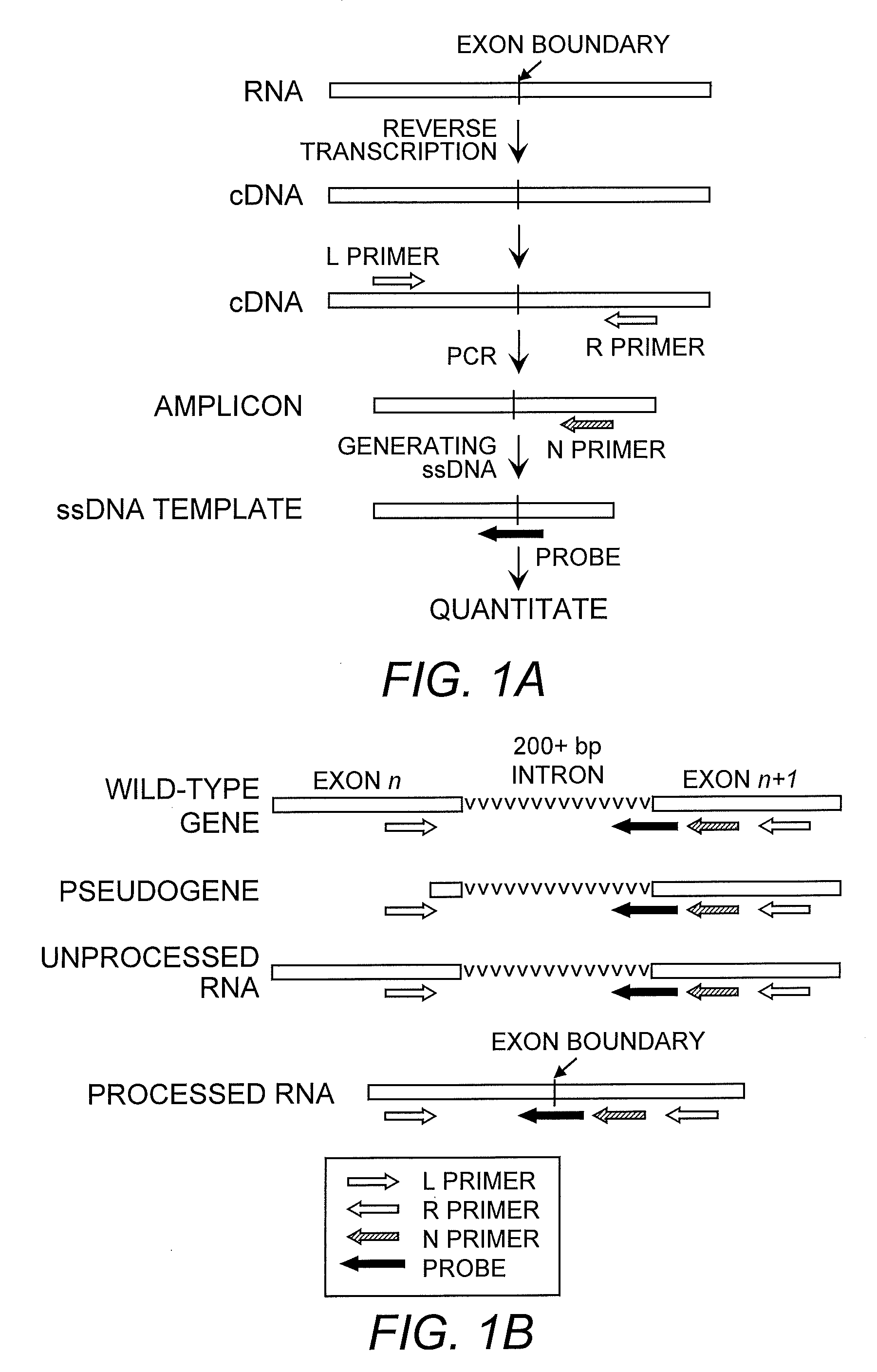Method for high-throughput gene expression profile analysis
a gene expression profile and high-throughput technology, applied in the field of high-throughput gene expression profile analysis, can solve the problems of reducing the value of microarray data, compromising data accuracy, and limited application in molecular network integration, and achieves high specificity and sensitivity
- Summary
- Abstract
- Description
- Claims
- Application Information
AI Technical Summary
Benefits of technology
Problems solved by technology
Method used
Image
Examples
example 1
Materials and Methods
[0074]Cell Lines and Single Cell Preparation. Human breast cancer cell line MCF-7 and ovarian cancer cell line NCI / ADR-RES are known in the art (Wu, et al. (2003) Cancer Res. 63(7):1515-1519). The cell lines were maintained in RPMI 1640 medium containing 10% fetal bovine serum, 100 units / ml penicillin, and 100 μg / ml streptomycin at 37° C. in a humidified atmosphere containing 5% CO2. After counting with a hemacytometer, cells were suspended in PBS (phosphate-buffered saline) to 1000 cells / μl or other desirable densities. Two μl was dispensed into an EPPENDORF tube containing cell lysis buffer (1.5 μl RNase inhibitor, 4 μl of 5× QIAGEN ONESTEP RT-PCR buffer, 12.5 μl H2O). Single cells were prepared from a diluted cell suspension of 2 cells / μl in 1×PBS. About 0.5 μl of the suspension was pipetted onto a small piece of glass coverslip, and was checked under a microscope. If the droplet contained only one cell, the piece of the coverslip was then transferred into an...
example 2
[0084]To establish a cancer gene expression array, a panel of cancer-related genes were selected based on their known functions and / or cancer-associated expression patterns from published literature. All amplicon sequences were subjected to computational screening to ensure their uniqueness. Primers and probes were selected according to a series of criteria described herein. Most primer pairs amplify sequences in two neighboring exons separated by large introns. The intron lengths ranged from 79 bp to 90 kb with an average of 2.0 kb and 97% of the introns are longer than 200 bp. Initially 1,445 genes were used as the input for the primer and probe design program. Primers and probes for 1,120 (77.5%) of these genes were selected. The remaining 22.5% failed in the selection process because of lack of introns or suitable sequences for primers and / or probes. Fifteen of these remaining genes with important functions in cancer development were included in the p...
PUM
| Property | Measurement | Unit |
|---|---|---|
| melting temperature | aaaaa | aaaaa |
| melting temperature | aaaaa | aaaaa |
| melting temperature | aaaaa | aaaaa |
Abstract
Description
Claims
Application Information
 Login to View More
Login to View More - R&D
- Intellectual Property
- Life Sciences
- Materials
- Tech Scout
- Unparalleled Data Quality
- Higher Quality Content
- 60% Fewer Hallucinations
Browse by: Latest US Patents, China's latest patents, Technical Efficacy Thesaurus, Application Domain, Technology Topic, Popular Technical Reports.
© 2025 PatSnap. All rights reserved.Legal|Privacy policy|Modern Slavery Act Transparency Statement|Sitemap|About US| Contact US: help@patsnap.com

